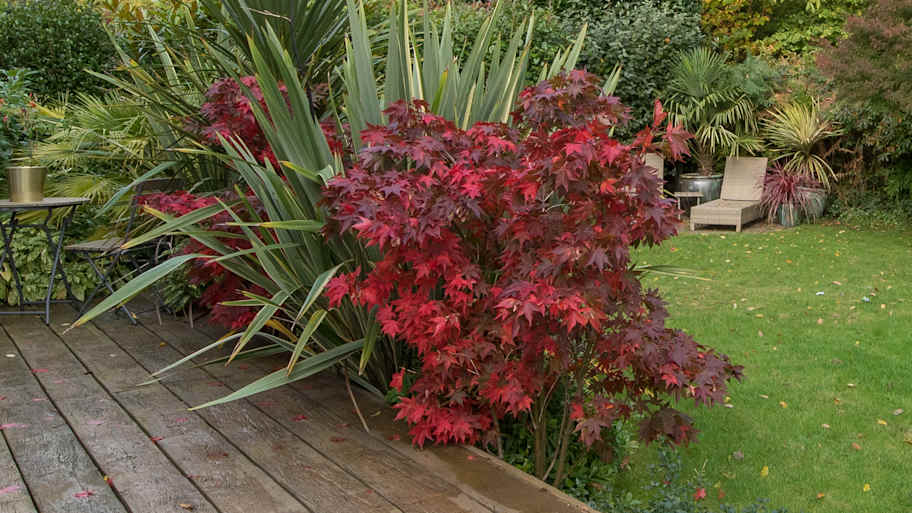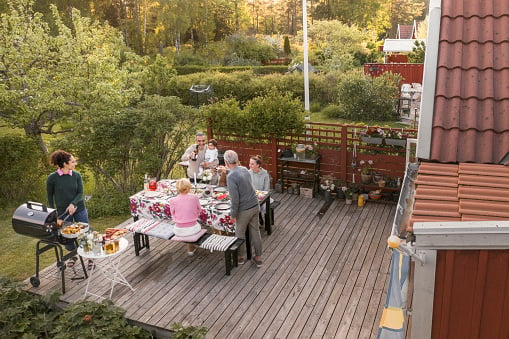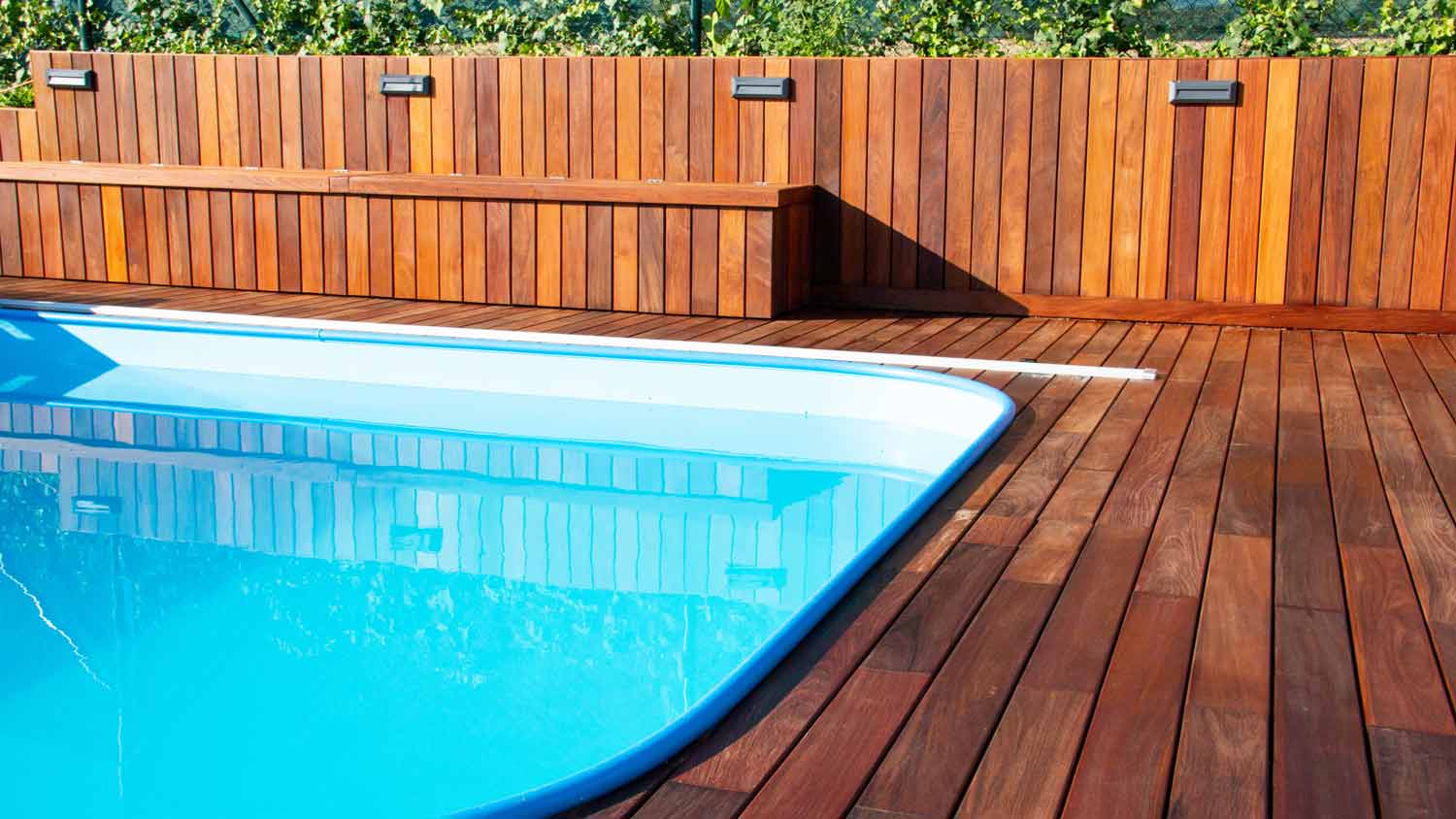
Cedar is a popular decking material, best known for its natural wooden look and resistance to rot. So, how much does a cedar deck cost? Find out in this guide.
Covering all the sizing basics—and your outdoor lounge area


Pergola sizes range from 8-by-8 to 20-by-20 in most cases, but they can go much larger for covering oversized patios.
The standard pergola height is 10 feet, but it can range from 8 to 12 feet, depending on length and width and your personal preference.
It’s best to size your pergola based on how you plan to use it and the size of your existing patio or deck.
The pergola material will affect the maximum span between posts, with fiberglass and wood offering the biggest spans of up to 20 feet.
A pergola can provide a luxurious place to dine and lounge while providing protection from sunlight, so it can serve as a great addition to any yard. Before you dive into construction, though, you need to figure out what size pergola is best. Pergola size is an important consideration to make, as an oversized or undersized pergola can look out of place in your yard, leave you without the room you need for full enjoyment, and even detract from home value.
The most common pergola sizes are 10-by-10 and 10-by-12 feet, with a height of close to 10 feet from the ground to the beams. However, pergola sizes and dimensions vary widely based on many factors, including how you plan on using the covered space and the size of the patio or deck over which you’re building your pergola.
Small pergolas are often 8-by-8 or even 6-by-8 feet, medium pergolas are usually 10-by-10 or 10-by-12 feet, and large pergolas range from 12-by-16 to 20-by-20 feet.
One of the easiest ways to determine what pergola size is right for you is to think about how you plan on using your pergola. Smaller pergolas that are 8-by-8 or smaller can provide coverage for a small lounge area for two to four people, medium pergolas can provide coverage for a lounge area that seats four to eight people with a coffee table, and large pergolas can cover seating areas for eight to 12 people.
| Dimensions (Ft.) | Pergola Size | Ideal For |
|---|---|---|
| 6x8 | Small | 2–4 people |
| 8x8 | Small | 2–4 people w/ table |
| 10x10 | Medium | 4–8 people |
| 10x12 | Medium | 4–8 people w/ table |
| 16x16 | Large | 8–12 people |
| 20x20 | Large | 8–12 people w/ table |
If you don’t entertain many guests and just want a small, private, shaded seating area for a few friends or family members, you can go with a small pergola that’s either 6-by-8 or 8-by-8 feet. This will give you enough room for a love seat and one to two lounge chairs, plus a small coffee table in the middle.
A medium-sized pergola that’s 10-by-10 or 10-by-12 feet will provide enough space to cover seating for four to eight people. You can set up a love seat and some outdoor lounge chairs or even an outdoor sectional in this size space, and you’ll still have room for a coffee table in the middle.
If you plan on hosting small gatherings in your outdoor space, go with a large pergola that’s 12-by-16, 16-by-16, 18-by-18, or 20-by-20 feet. This will give you enough space for an outdoor sectional that seats four to six, plus a few lounge chairs or a loveseat for extra seating. You’ll still have space for a coffee table and some end tables for convenience, especially with a 20-by-20 pergola.
For homeowners who envision a fully-stocked kitchen, a dining area, and a separate lounge area for larger parties of 12 or more people, an oversized pergola is the way to go. For pergola dimensions longer than 20 feet, you’ll need to install multiple posts to separate the span, but going this route means you can make your pergola as large as you want. You can cover an entire 500-square-foot patio or use non-standard dimensions to cover an irregular patio or deck.
Getting the right pergola size is challenging. While it’s best to hire a pergola contractor near you to nail down the size and dimensions, you can also consider the following factors to get a good idea of what you need.
You may need to start by looking at your existing patio or deck if you plan on installing the pergola over what’s already there. Look at your space, and think about what you plan on using your pergola for. Figure out which portion of the area you want to cover. This is a good place to start, as it can limit the dimensions of your pergola if you have a slim landscaping feature you’re covering.
Another important thing to consider is how you plan on using your pergola, and it can help you avoid going too big or too small. If you never host larger parties and just want a small space to relax with a few friends or family members, go with a small pergola that’s 8-by-8. If you host large parties or want multiple dedicated areas under your pergola, like a lounge area and a separate dining area, expect to go much bigger.
The materials you choose for your pergola can limit the span between the support posts, so it’s a good idea to base your size, in part, on the materials you’re using. Wood and fiberglass beams can span up to 20 feet before you need to install an additional support post. PVC and aluminum aren’t as strong, so you may only be able to get spans of 12 to 14 feet before you need an additional post.
Speak with a professional who builds pergolas to decide on a material, as the maximum span can depend on the weather in your area, local building code, and more.
Attached pergolas connect to a ledger board that connects to your house, so they get significantly more support on one side than a freestanding pergola would. As a result, you can often go larger with this type of pergola and may be able to have longer beam spans without adding more supports. However, attached pergola sizes are limited by the length of your structure that you can safely attach to.
A freestanding pergola normally needs to be smaller or include additional supports or braces because you don’t have an exterior building wall to add stability. Building code is also more likely to limit freestanding pergola size because you’ll face setback laws that prevent you from building too close to your property line in most areas. This often isn’t an issue when you attach a pergola to an existing structure.
Building a pergola costs between $10 and $50 per square foot, on average, which means your budget is an important consideration when determining pergola size. If you have a massive budget, you don’t need to worry much about the dimensions and can build whatever size you want. Homeowners with a more limited budget may need to downsize their pergola ideas if the cost gets out of hand based on the dimensions.
If your pergola is too large for your liking and you want more uncovered space in your yard, your best bet is to hire a pergola contractor to demolish the old one and build a new one. This is an expensive option, but there’s no convenient way to make a pergola smaller since doing so would require moving support posts and making the beams shorter.
If your pergola is too small for your needs, you have two options. First, you can demolish the existing pergola and build a new one, which will be more expensive but will open up the possibility of new dimensions. Second, you can ask a pergola contractor to build another section of pergola adjacent to the existing one and tie in the new structure to the old one. Depending on pergola material, this may not always be possible, but if it is, it will be more affordable than knocking down and starting over.
From average costs to expert advice, get all the answers you need to get your job done.

Cedar is a popular decking material, best known for its natural wooden look and resistance to rot. So, how much does a cedar deck cost? Find out in this guide.

Ipe decking costs vary based on size, construction, finish, and whether you hire a professional. Learn more about how to budget for this project.

Discover how much it costs to build a balcony, including average prices, cost factors, and tips to budget your project. Learn what impacts balcony construction costs.

A sinking deck can be a major problem. Learn about the potential answers to the question, “Why is my deck sinking?” as well as their solutions.

Nothing ruins outdoor ambiance like a greenish deck. Discover why your deck turns green and find some straightforward solutions to fix and prevent the issue.

A worn-out pool deck is more than just unsightly. Learn the signs your pool deck needs to be resurfaced so you can address the issue ASAP.